Table of content
Introduction
Papayas, known scientifically as Carica papaya, are tropical fruits renowned for their sweet, juicy flesh and numerous health benefits. Rich in vitamins A, C, and antioxidants, papayas are a favorite among health-conscious individuals and culinary enthusiasts alike. However, storing papayas properly can be challenging, especially for those unfamiliar with the nuances of preserving tropical fruits. Incorrect storage methods can lead to premature ripening, spoilage, or a loss of flavor and texture. This comprehensive guide aims to provide detailed insights on how to store papayas effectively, ensuring they retain their freshness, flavor, and nutritional value for as long as possible.
Understanding Papaya Ripening Stages
Before diving into storage techniques, it’s crucial to understand the ripening stages of papayas. Papayas undergo distinct changes as they mature, and recognizing these stages is key to storing them correctly.
-
Green Stage: When papayas are first harvested, they are typically green in color with a firm texture. At this stage, they are unripe and not suitable for consumption.
-
Breaking Color Stage: As papayas begin to ripen, their skin starts to change color, usually turning a yellowish-green or partially yellow. This is the “breaking color” stage, indicating that the fruit is starting to mature but is still not fully ripe.
-
Fully Ripened Stage: Fully ripe papayas have a bright yellow or orange skin, depending on the variety. They are soft to the touch but not overly mushy, with a fragrant aroma. This is the ideal stage for eating.
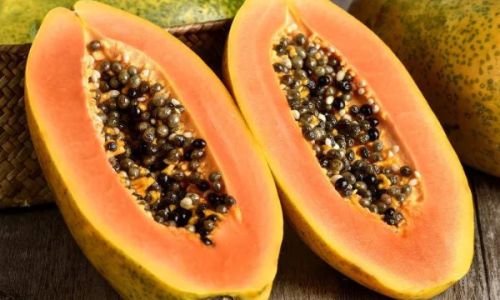
-
Overripe Stage: If left on the counter too long, papayas will continue to ripen and eventually become overripe. They will develop dark spots, become excessively soft, and may even start to rot.
Choosing the Right Papaya for Storage
Selecting the right papaya at the outset is the first step in ensuring proper storage. Here are some tips for choosing the best papayas:
- Appearance: Look for papayas with smooth, unblemished skin. Avoid fruits with cracks, bruises, or soft spots.
- Color: Depending on your preference for ripeness, choose papayas that are either mostly green (for later use) or have a nice blend of yellow and green (for immediate consumption).
- Firmness: Gently press the fruit. It should yield slightly but not feel mushy. Overly soft papayas are likely overripe.
- Aroma: Ripe papayas have a distinct, sweet aroma. If the fruit smells strongly of fermentation or decay, it’s best to avoid it.
Storing Unripe Papayas
If you’ve purchased unripe papayas or harvested them from your garden before they’re fully ripe, here’s how to store them:
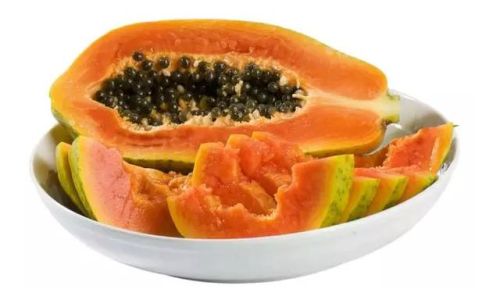
Room Temperature Storage
For papayas that are still mostly green, you can leave them at room temperature in a cool, dry place. This allows the fruit to continue ripening naturally. Keep them away from direct sunlight, which can cause them to ripen too quickly and unevenly.
Paper Bag Method
To accelerate the ripening process, place unripe papayas in a paper bag. The bag traps ethylene gas, a natural ripening agent emitted by the fruit, which speeds up the ripening process. Make sure the bag is not sealed tightly to prevent moisture build-up, which can lead to mold. Check the papayas daily and remove them from the bag once they reach your desired ripeness.
Refrigeration (Not Recommended for Unripe Papayas)
Refrigeration is generally not recommended for unripe papayas as it slows down the ripening process. However, if you must store them in the fridge temporarily (for example, if you live in a very warm climate), wrap them loosely in plastic wrap or place them in a perforated plastic bag to allow some air circulation. Be aware that refrigerated papayas may not ripen evenly or may take longer to ripen once removed from the fridge.
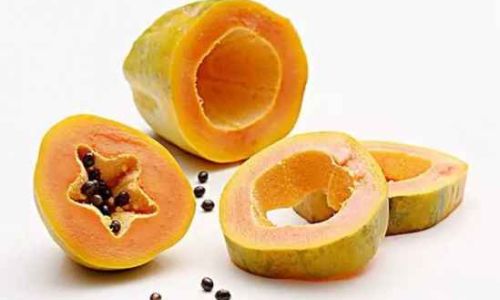
Storing Ripe Papayas
Once papayas have reached their fully ripened stage, proper storage becomes even more critical to prevent spoilage. Here are several methods for storing ripe papayas:
Countertop Storage
For immediate consumption, ripe papayas can be kept on the countertop at room temperature. This method is best suited for fruits that you plan to eat within a day or two. Keep them away from direct sunlight and heat sources to prevent rapid spoilage.
Refrigeration
For longer-term storage, refrigerate ripe papayas. This slows down the ripening process and extends their shelf life. Here’s how to do it:
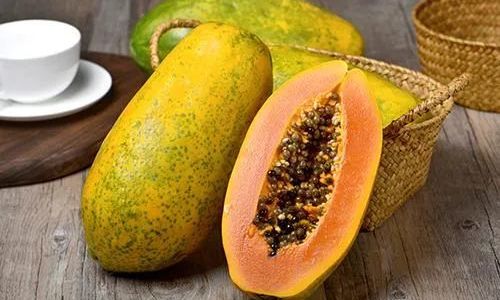
- Wrapping: Wrap each papaya individually in plastic wrap or place them in a plastic bag with holes punched for ventilation. This helps retain moisture while preventing the fruit from becoming too soggy.
- Temperature: Store the wrapped papayas in the crisper drawer of your refrigerator, where the temperature is more stable and slightly humid. Avoid placing them in the door compartments, which tend to have fluctuating temperatures.
- Duration: Ripe papayas can be stored in the fridge for up to a week. However, their texture and flavor may change slightly over time, becoming softer and less sweet.
Freezing Papaya
If you have an excess of papayas or want to preserve them for future use, freezing is an option. Here’s how to freeze papayas effectively:
- Preparation: Peel and seed the papaya, then cut it into chunks or slices. Blanching is optional but can help retain color and texture. To blanch, immerse the papaya pieces in boiling water for 2-3 minutes, then plunge them into ice water.
- Freezing Methods: You can freeze papaya pieces directly on a baking sheet until solid, then transfer them to a freezer bag or container. Alternatively, you can puree the papaya and freeze it in ice cube trays or freezer bags for easier portioning.
- Storage Duration: Frozen papaya can be stored for up to 6-8 months. When ready to use, thaw it in the refrigerator overnight or defrost it in a microwave on low power.
Dealing with Overripe Papayas
If you find that your papayas have become overripe, don’t despair. There are still several ways to use them:
- Cooking: Overripe papayas are perfect for cooking as their softer texture blends well into smoothies, purees, and baked goods like muffins and bread.
- Freezing: As mentioned earlier, overripe papayas can be frozen for later use.
- Composting: If you’re not planning to use the overripe papayas, consider composting them. They make excellent organic material for enriching your garden soil.
Preventing Common Storage Issues
To ensure your papayas stay in optimal condition, here are some tips to prevent common storage issues:

- Avoid Mixing Ripeness Levels: Store papayas of similar ripeness levels together to prevent uneven ripening.
- Check Regularly: Inspect your stored papayas regularly for signs of spoilage, such as mold, dark spots, or an unpleasant odor.
- Proper Wrapping: Ensure that ripe papayas are wrapped properly to prevent dehydration and the absorption of odors from other foods in the fridge.
- Consume Promptly: Once papayas are ripe, consume them as soon as possible to enjoy their peak flavor and texture.
Conclusion
Storing papayas correctly is a balance of understanding their ripening stages, selecting the right fruit, and using appropriate storage methods. By following the tips outlined in this guide, you can ensure that your papayas stay fresh, delicious, and nutritious for as long as possible. Whether you’re storing them at room temperature, in the fridge, or even freezing them for future use, proper storage techniques will help you maximize the enjoyment and health benefits of this tropical fruit. Happy storing, and bon appétit!
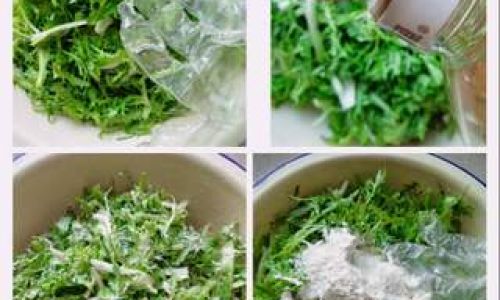
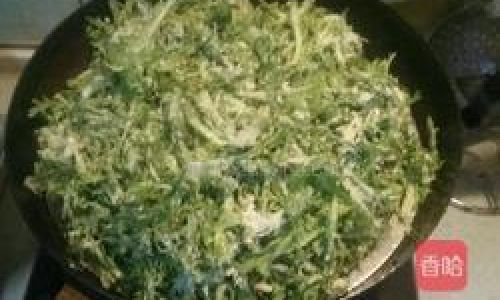
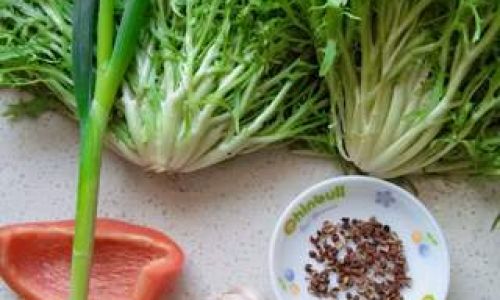
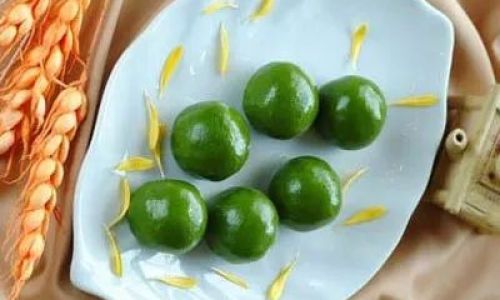
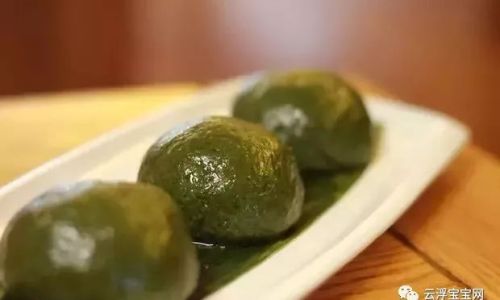
0 comments